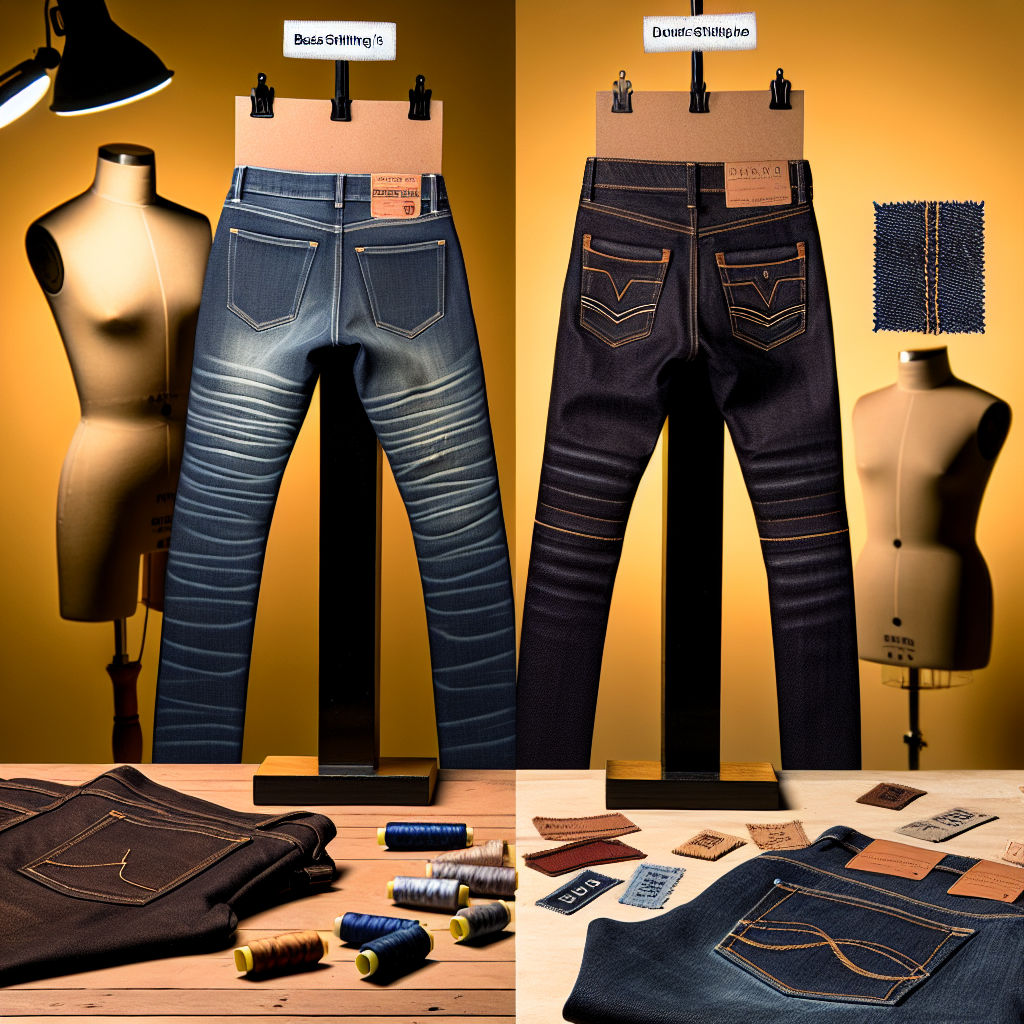What’s the Difference Between $50 Jeans and $500 Jeans?
When shopping for a new pair of jeans, it’s not uncommon to find options that vary wildly in price. From basic $50 pairs to luxurious $500 designer denim, the price spectrum raises an important question: What exactly justifies such a steep price difference? While both serve the same basic function, the key differentiators lie in quality, craftsmanship, brand prestige, and long-term value. Below, we break down the core distinctions between affordable and high-end jeans to help you determine which is right for your wardrobe—and your wallet.
1. Fabric Quality: The Foundation of All Denim
Low-Cost Denim: Mass-Produced Cotton Blends
Jeans in the $50 price range are typically made from mass-produced cotton blends—often including polyester or spandex—to reduce costs and increase comfort. While these materials make the jeans more affordable and easier to wear right off the rack, they frequently compromise durability and fade resistance.
Premium Denim: Japanese Selvedge and Organic Cotton
On the opposite end, $500 jeans usually feature premium fabrics such as Japanese selvedge denim or organic, ring-spun cotton. These materials are prized for their superior texture, strength, and aging process. Many high-end manufacturers specifically source from mills with centuries-old traditions, resulting in a product that develops a unique patina and character over time—qualities not found in budget denim.
2. Craftsmanship: The Art Behind the Stitch
Fast Fashion Construction
Budget jeans are often produced in high volumes using automated machinery. This leads to faster production times and lower costs, but can also result in imperfections like loose threads, uneven stitching, and poorly finished seams. Manufacturing is typically done offshore to further reduce expenses.
Artisan-Level Tailoring
Conversely, $500 jeans are often hand-finished and crafted in smaller batches. Attention to detail is paramount—chain-stitched hems, reinforced pockets, and specialty rivets are common. These artisanal touches not only enhance durability but also elevate the overall aesthetic. Additionally, premium jeans are often produced domestically or in fashion capitals like Italy or Japan, where labor laws and ethical production standards are strictly observed.
3. Fit and Design: Style That Lasts
Trend-Driven vs. Timeless
Lower-priced jeans often tie into fast fashion cycles, prioritizing trendy cuts and colors that may go out of style in a year or two. While it’s easy to partake in passing fads at an affordable price, constant turnover is both environmentally harmful and financially inefficient in the long run.
Tailored for Longevity
High-end jean manufacturers aim for timelessness. The fit is meticulously designed to flatter the body over time, even improving with wear as the denim molds to your shape. From classic straight-leg to modern slim-fit styles, each piece often features subtle yet elegant design choices that resist passing trends.
4. Brand Prestige and Exclusivity
Mass Appeal
$50 jeans are widely available from major retail chains that produce clothing for the mass market. While low prices make them accessible, these jeans lack the exclusivity and prestige often associated with luxury products. Branding is minimal and focused more on familiarity than status.
Luxury Branding
Designer denim, however, often carries the weight of a prestigious label—think brands like Acne Studios, Saint Laurent, or Balmain. These labels invest significantly in branding, fashion shows, celebrity endorsements, and more. When you pay $500 for jeans, part of the cost covers the brand’s heritage, exclusivity, and cultural cachet.
5. Sustainability and Ethical Production
Questionable Labor Practices
Inexpensive jeans are generally produced in factories where labor conditions may be less than ideal. Ethical concerns arise regarding wages, worker safety, and environmental practices. Furthermore, cheap jeans often have a high ecological footprint, utilizing large amounts of water and chemicals during production.
An Eco-Friendly Investment
Premium brands are increasingly committed to sustainability. Many use recycled materials, eco-friendly dyes, and adopt waste-reducing techniques in their manufacturing processes. Additionally, because these jeans are made to last, they promote a “buy less, wear more” philosophy that’s aligned with modern sustainability goals.
6. Longevity: Cost Per Wear
Short-Term Savings, Long-Term Costs
Affordable jeans may save you money upfront, but their shorter lifespan means replacing them more often. Common issues include fabric thinning, color fading, and seam fraying—issues that often appear just a few months after purchase.
Investment in Durability
A $500 pair of jeans, on the other hand, can last for years if not decades. Thanks to their durable fabric and superior construction, you’ll likely spend less in the long run by investing in quality over quantity. Some enthusiasts even pass down cherished jeans as vintage items, thanks to their enduring appeal and wearability.
Conclusion: Which Jeans Are Right for You?
Ultimately, the decision between $50 and $500 jeans comes down to individual priorities. If you’re looking for a quick, stylish fix and don’t mind replacing your jeans every season, budget denim might suit your needs. But if you’re a fan of quality, sustainability, and timeless style, investing in premium jeans is worth every penny.
Think of high-end jeans as a wardrobe staple with soul—crafted with care, meant to evolve with wear, and built to tell a story unique to you. Whether you’re after the prestige of a designer logo, the tailored fit of artisan pieces, or the satisfaction of making a sustainable choice, $500 jeans offer more than just fabric—they offer an experience.
So next time you find yourself debating denim prices, consider the value that goes far beyond the price tag. Because in the world of fashion, sometimes you truly get what you pay for.











